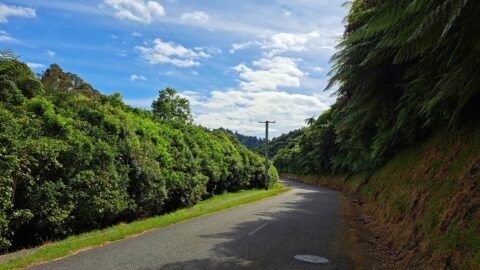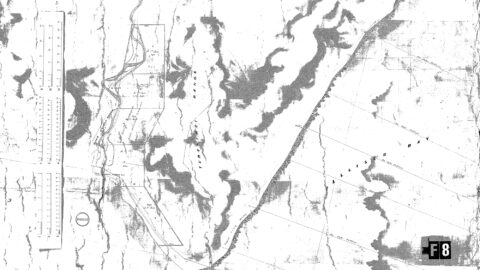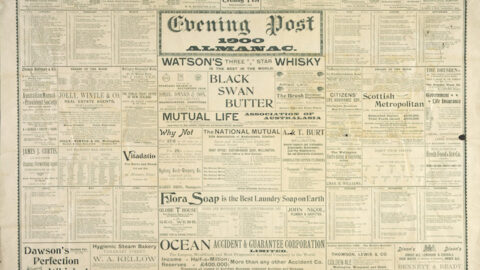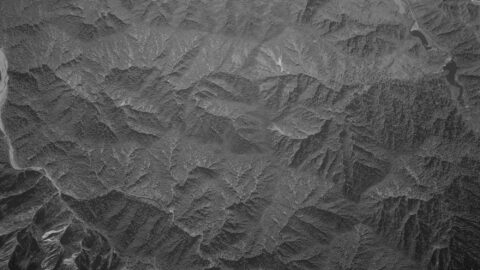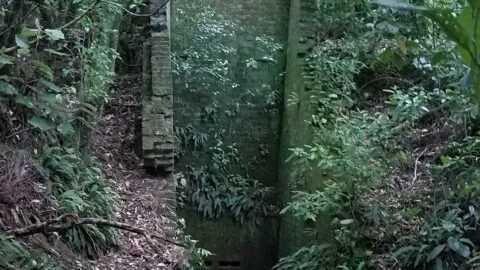TO WELLINGTON AND BACK
[By One of the Deputation.]
The city of Wellington is at present supplied with water from a reservoir situated in the hill behind it, the Kaiwarra stream, which is turned into it, being the chief source. On a fine day, it is a very pleasant walk, and the grand view to be obtained will fully compensate for the uphill road.
The cost of the present supply was about £40,000, but as it has been found inadequate to meet the requirements of the residents, the City Council is now carrying out a water scheme which, when finished, will be the largest and best supply in New Zealand. The source is the Wainuiomata River, sixteen miles from Wellington. The estimated cost of this scheme is £130,000, for which a loan has been effected at 6 per cent, with the £100 debentures realising £104. The work has been in progress for some time, and it is expected to be completed in about nine months.
Mr Baird, who formerly held the position of Provincial Engineer in Wellington before the abolition of the provinces, has control of the matter, now holding the office of surveyor to the Wellington City Council. Invitations having been issued by the above body to a number of gentlemen to visit the source and examine the works in construction, that favour was extended to us. However, Mr Herbert having gone North and Mr Buchanan being obliged to keep a previously made appointment, only His Worship the Mayor and I were able to avail ourselves of the opportunity so kindly placed at our disposal.
We left Wellington at 10 a.m. and had a very pleasant drive along the shore of the harbour as far as the Lower Hutt. Crossing the river, we proceeded up the range leading to the Wainuiomata Valley, from which a splendid view of the Hutt, with all its picturesque surroundings, gardens, residences, and racecourse, was obtained.
After a drive of about three miles up the valley, we reached Sinclair’s Mill, where an adjournment was made for lunch, which was duly appreciated, and the party became very agreeable. From here, we proceeded on foot to the head of the river, a distance of about two miles, examining the work as we went along.
I might mention that at the foot of the valley, which is reached through the range by a tunnel half a mile in extent, cast-iron pipes of twenty-four inches in diameter are laid alongside the road leading to the Hutt. These pipes cross two branches of the stream by substantial bridges specially erected for that purpose and apparently strong enough to carry a railway train.
From the above point, the pipes are enlarged to thirty inches in diameter and laid for nearly four miles up the valley to a little above Sinclair’s Mill, where there is a considerable drop and a large concrete well sixty feet deep. From here, a continuous covered concrete culvert, about three feet in diameter, is in course of construction alongside the hill to where the reservoir is to be made.
The contract for this portion is in the hands of Mr Oakes, and the price is £15,000. The concrete for this work is all mixed at the head of the stream, using the most approved appliances, and then conveyed down a tramway to where it is needed. The site for the reservoir is a splendid one, being almost a natural selection—the riverbed opens out considerably and then enters a gorge where a concrete wall sixty feet wide is to be erected.
After we had fully examined this portion, we returned to Sinclair’s Mill, where our buggies were waiting. A load of cement had just arrived and been discharged, so we availed ourselves of an empty truck to ride back to our destination by the tramway. As it was mostly downhill, we went at a very rapid pace and enjoyed the ride thoroughly.
Having partaken of some liquid refreshment, we left for Wellington, where we arrived at seven o’clock after having spent an exceedingly pleasant day.
On Monday, the Mayor and I, by invitation, paid a visit to the Corporation Yards, situated at Te Aro. We witnessed the entire modus operandi of producing the various concrete blocks used for kerbing, channelling, culverts, etc. The footpaths in the city are mostly laid with concrete pavement, which is made into slabs at a cost of about 7s per yard for making and laying. The Corporation employs about 120 daymen to carry out city maintenance work.
Being at this end of town, we took the opportunity to call on an old Lawrence resident, Mr Enoch Tonks, who has very extensive brickworks in Webb Street. He is doing a very good business and inquired kindly about the welfare of a number of old Tuapekaites.
Having secured berths on the Ringarooma, under the command of Captain Edie, we left Wellington at 4 p.m., having had what our American cousins call “a good time” and meeting a number of kind friends while there.
We had a pleasant run of about sixteen hours to Lyttelton, arriving in time for the 9:35 train to Christchurch. There, I parted from Messrs Walker and Buchanan, as they intended to continue their journey to Dunedin by steamer, while I planned to travel overland by express.
While in Christchurch, I called on Mr C. W. Adams, who for many years served as a mining surveyor in this district, and found him and his family flourishing. He prevailed upon me to stay with him, and together we visited the new College Hall, which had just been erected by the Canterbury Board of Governors and was opened that day for the conferral of M.A. and B.A. diplomas to the successful University candidates. The two Miss Edgars were among them.
The candidates were presented to the Chancellor by our old Otago friend, Professor Hutton, and the speakers were the Chancellor (Mr Tancred) and Professors Von Haast and Brown. The Hall is a very fine building, and there was a large gathering present.
I also visited the Museum, which should not be missed by anyone spending a day in Christchurch, as it is the finest in New Zealand, with exceedingly interesting collections. In the evening, Mr Adams and I went to the Public Library, which is worth seeing, particularly the Reference Library, a special feature of the institution.
As it was a moonlit night, we had a pleasant walk along the banks of the Avon, enjoying the view, which was very picturesque, and listening to the Cathedral chimes sounding sweetly in the distance.
I left by the express the next morning at 8:15, arriving in Dunedin at 7:25, thoroughly enjoying the journey as the day was very fine. I was much pleased with the passing glimpses of the various townships along the way—Ashburton, Temuka, Geraldine, Timaru, Oamaru, Palmerston, and Waikouaiti.
While staying in Oamaru for a short time, I met our old friend Mr Inspector Thompson, who was pleased to see a Lawrence face.
In Dunedin, I met my colleagues again, and after a little enjoyment there, we left for home, duly arriving at about 9 p.m., where we were met by a numerous selection of friends who, if not enthusiastic, were certainly demonstrative.
Thus ends the chronicle of the journey To Wellington and Back, trusting that the account has proved acceptable to your numerous readers.
Tags: Coleman's Tunnel Newspaper Oakes Tunnels Waterworks
